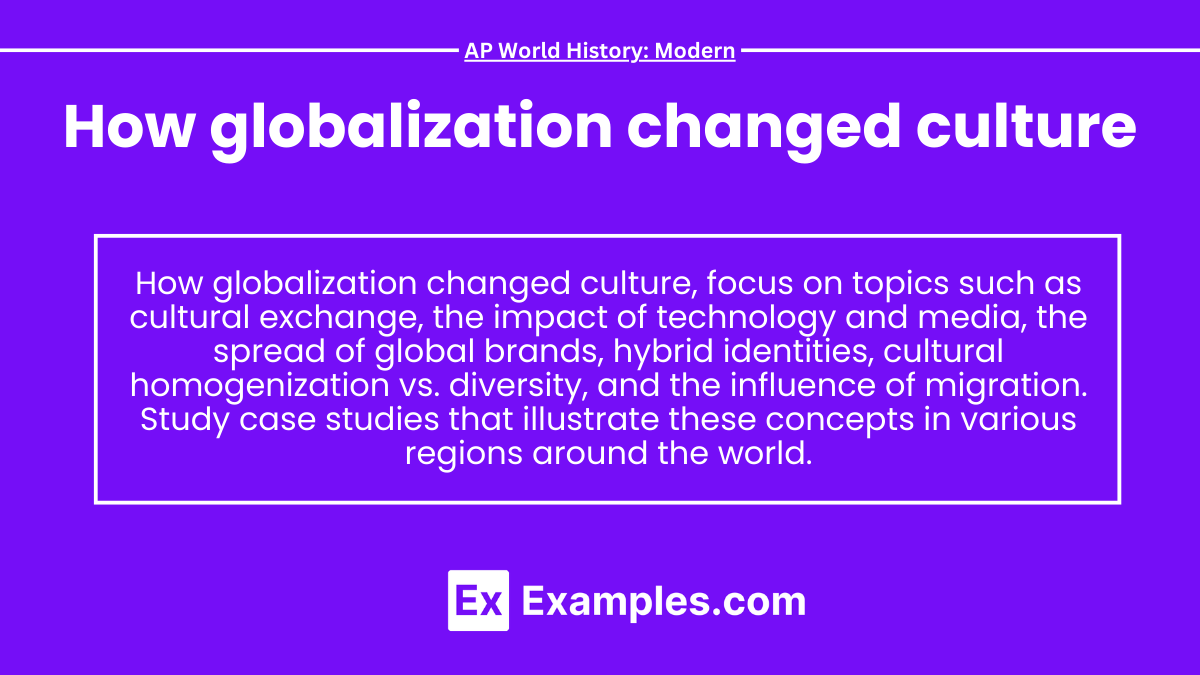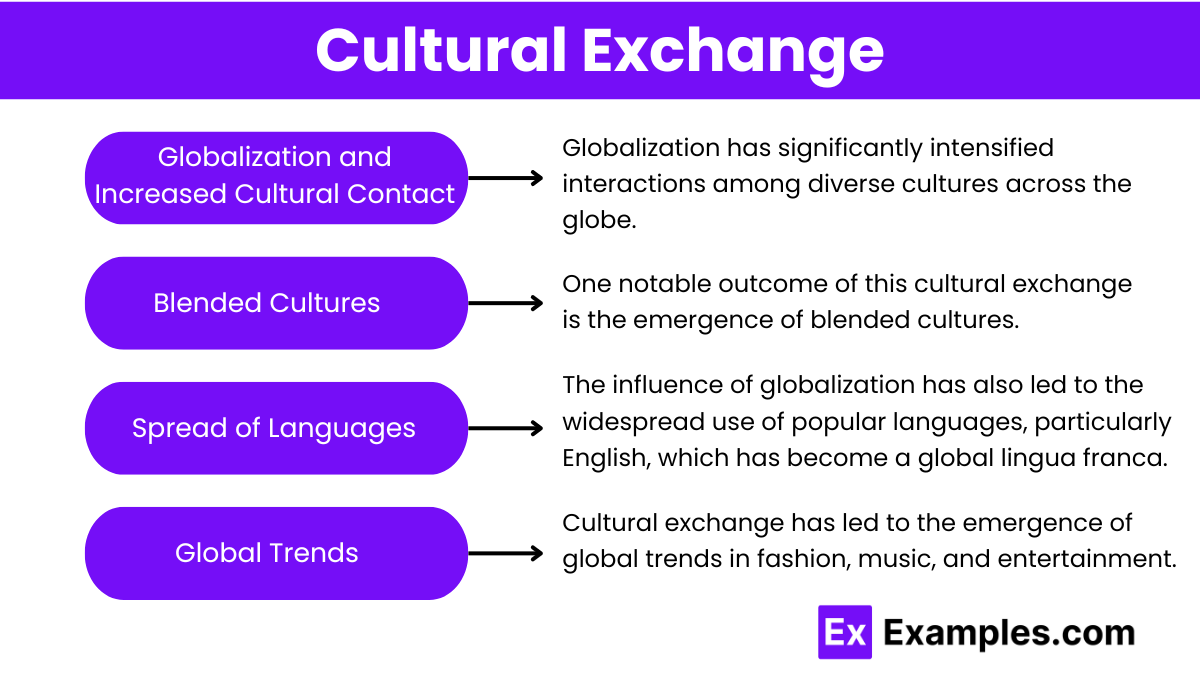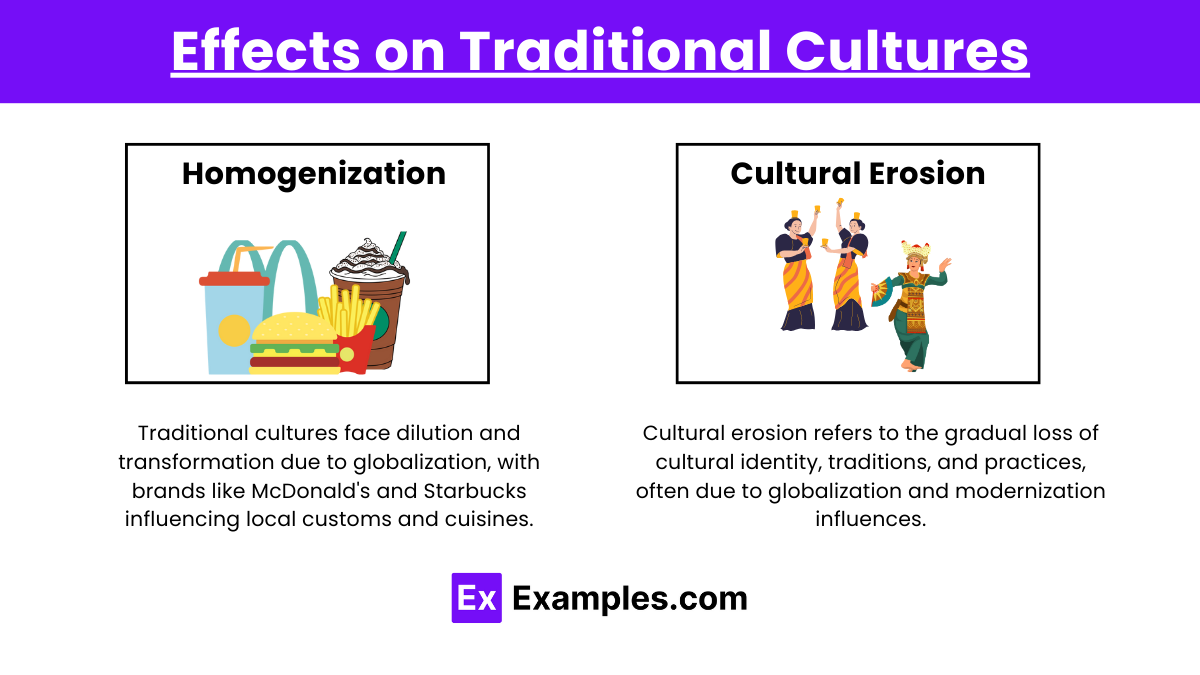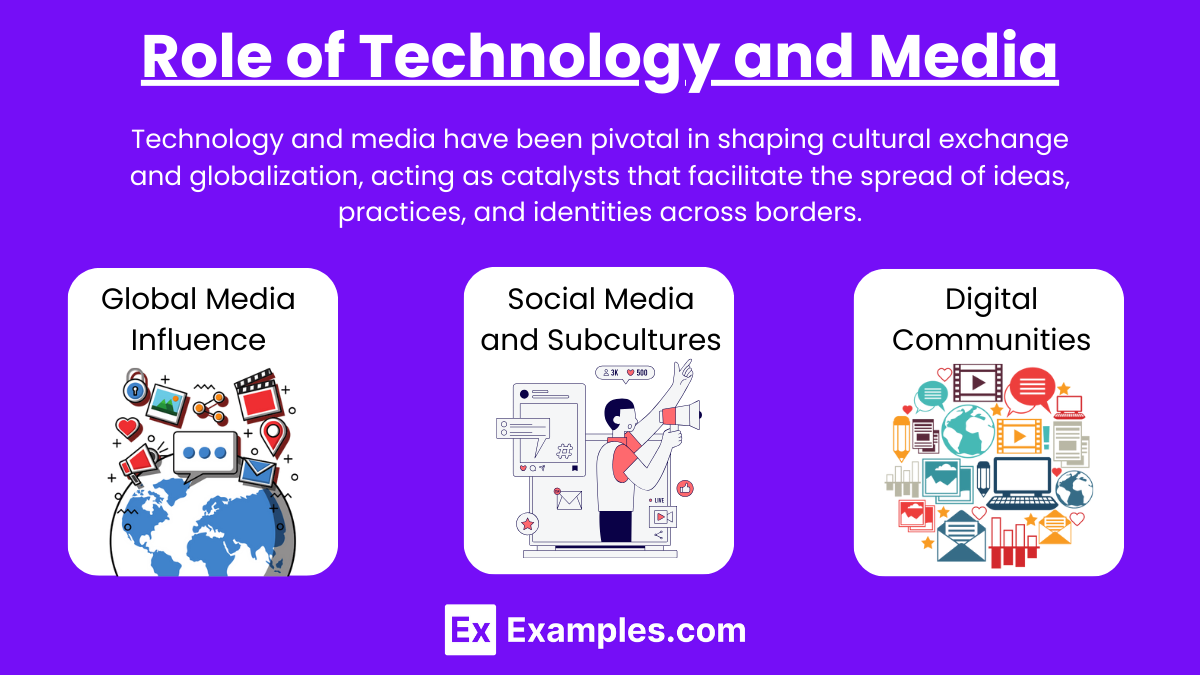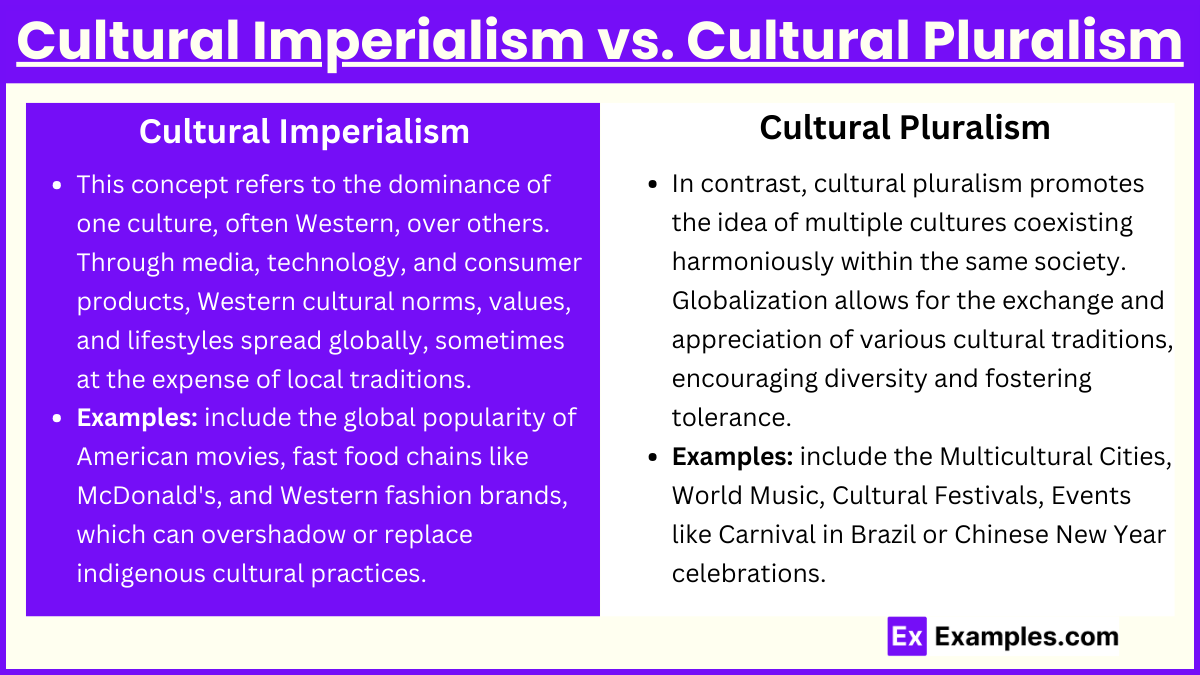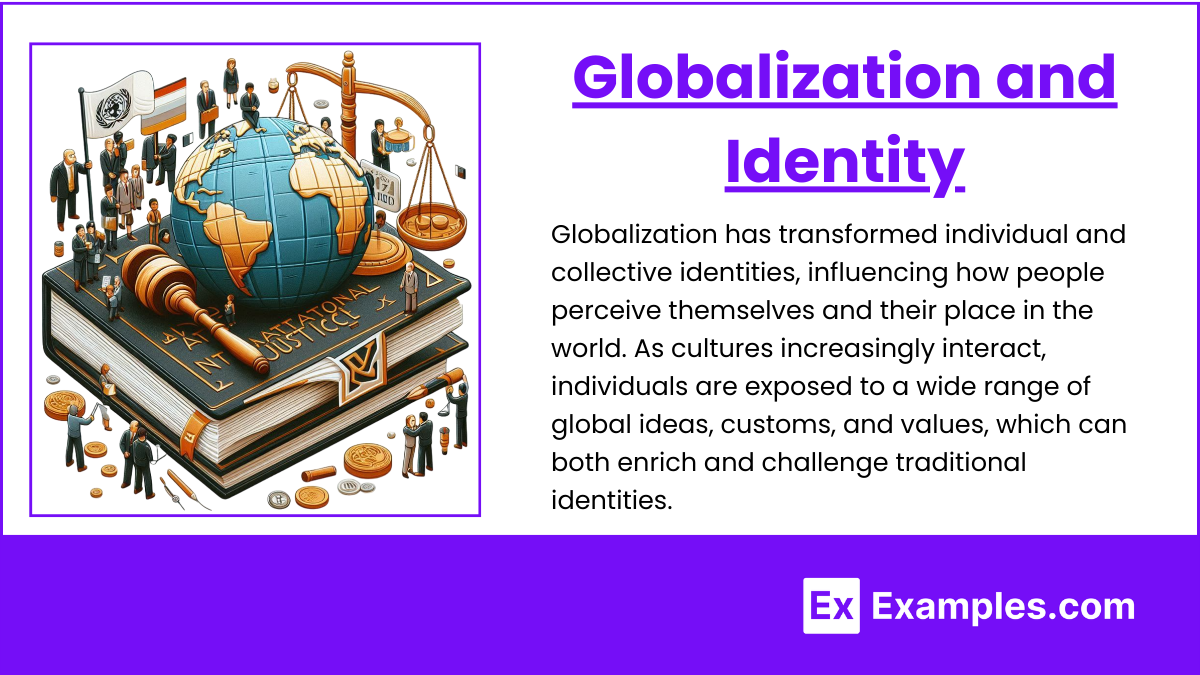Globalization has significantly transformed culture by fostering increased cultural exchange, blending traditions, and spreading global media and technology. It has led to the hybridization of cultures, the dominance of Western influences, and the rise of multicultural societies. However, globalization has also challenged traditional practices, sparking cultural resistance, preservation efforts, and debates over cultural identity and diversity.
Free AP World History: Modern Practice Test
Learning Objective
In studying "Globalization and Cultural Change" for AP World History: Modern, you should learn to identify how globalization facilitated the spread of ideas, technologies, and cultural practices across borders. Analyze the blending of cultures through trade, migration, and communication, and evaluate the impacts of globalization on local traditions and global identities, providing insight into the interconnectedness of societies and the emergence of new cultural trends.
1. Cultural Exchange
Globalization and Increased Cultural Contact
Globalization has significantly intensified interactions among diverse cultures across the globe. The rapid advancement of technology, communication, and transportation has made it easier for people to connect, leading to the sharing of ideas, customs, and lifestyles.
Blended Cultures
One notable outcome of this cultural exchange is the emergence of blended cultures. A prominent example is K-pop, which combines traditional Korean musical elements with Western pop influences, hip-hop, and electronic music. This genre has gained immense popularity not just in Korea but globally, highlighting how cultural elements can intermingle to create something unique.
Spread of Languages
The influence of globalization has also led to the widespread use of popular languages, particularly English, which has become a global lingua franca. English is often used in international business, science, technology, and entertainment, facilitating communication across different cultural backgrounds.
Global Trends
Cultural exchange has led to the emergence of global trends in fashion, music, and entertainment. The influence of various music genres, like hip-hop and reggaeton, has crossed borders, while fashion trends from different parts of the world are now accessible to a global audience. This interconnectedness has created a shared cultural space where influences are constantly exchanged.
2. Effects on Traditional Cultures
Homogenization
Traditional cultures face dilution and transformation due to globalization, with brands like McDonald's and Starbucks influencing local customs and cuisines. One of the significant effects of globalization on traditional cultures is the phenomenon of homogenization. Local traditions, practices, and cuisines can be overshadowed by dominant global cultures, particularly Western culture. proliferated worldwide, often replacing traditional diets and eating habits in various regions.
Cultural Erosion
Cultural erosion poses a critical threat to smaller and indigenous cultures. As global influences permeate local societies, there is a risk that unique cultural identities may be diluted or lost entirely. This erosion can manifest in language decline, the abandonment of traditional practices, and the commodification of cultural heritage.
3. Role of Technology and Media
Technology and media have been pivotal in shaping cultural exchange and globalization, acting as catalysts that facilitate the spread of ideas, practices, and identities across borders. The impact of technology and media can be observed through various channels and platforms that promote global connectivity and cultural interaction.
Global Media Influence
The advent of global media platforms, such as Netflix and YouTube, has transformed how cultures are disseminated and consumed. These platforms allow for the rapid spread of cultural content, making it accessible to a global audience. As a result, people can experience diverse cultural narratives and perspectives from around the world.
Social Media and Subcultures
Social media plays a pivotal role in the formation of global subcultures. Online communities centered around shared interests, such as gaming, music, or art, connect individuals across geographical boundaries. These digital spaces foster interactions that may lead to new cultural expressions, reinforcing the idea of a globalized culture while allowing for localized adaptations.
Digital Communities
Technology has also enabled the formation of global subcultures, such as gaming communities or fandoms, which unite people across borders based on shared interests rather than geography.
4. Cultural Imperialism vs. Cultural Pluralism
Cultural Imperialism
This concept refers to the dominance of one culture, often Western, over others. Through media, technology, and consumer products, Western cultural norms, values, and lifestyles spread globally, sometimes at the expense of local traditions. Examples include the global popularity of American movies, fast food chains like McDonald's, and Western fashion brands, which can overshadow or replace indigenous cultural practices. Critics argue that cultural imperialism leads to homogenization, where diverse cultures lose their uniqueness.
Cultural Pluralism
In contrast, cultural pluralism promotes the idea of multiple cultures coexisting harmoniously within the same society. Globalization allows for the exchange and appreciation of various cultural traditions, encouraging diversity and fostering tolerance. This model supports the preservation of local customs while embracing global influences. Examples include the Multicultural Cities, World Music, Cultural Festivals, Events like Carnival in Brazil or Chinese New Year celebrations
5. Globalization and Identity
Global Citizenship
As globalization fosters increased cultural contact, many individuals identify as global citizens. This perspective emphasizes openness to new cultures, promoting the idea that cultural exchange enriches personal experiences and understanding. Global citizens often seek to engage with diverse cultural practices and viewpoints, contributing to a more interconnected world.
Nationalism and Resistance
However, globalization also prompts a counter-response in the form of nationalism. Some individuals and groups resist global influences, advocating for the preservation of local culture and identity. This nationalism can manifest in movements aimed at protecting language, traditions, and customs from perceived external threats.
Role of Diasporas
Diaspora communities, formed through migration, play a significant role in cultural exchange and identity formation. Immigrants bring their cultures to new locations, enriching the cultural fabric of their host societies. This process creates multicultural societies where diverse traditions coexist and contribute to a shared cultural identity.
Examples
Example 1: Cinematic Influence
Bollywood films blend Indian culture with Western storytelling, attracting global audiences and reshaping perceptions of cinema worldwide.
Example 2: Digital Communication
Social media enables rapid cultural exchange, allowing global participation in trends and fostering connections across diverse communities.
Example 3: Art and Design
Collaborative art movements combine traditional and contemporary styles, resulting in unique works that reflect global influences and creativity.
Example 4: Sports Culture
International sporting events create a global community, while local sports adapt by integrating global elements, enhancing their popularity.
Example 5: Religious Exchange
Globalization spreads religious practices like yoga, leading to new interpretations that blend traditional beliefs with modern wellness trends.
MCQs
Question 1:
Which of the following best describes the impact of globalization on culinary practices?
A) It has led to the isolation of local cuisines.
B) It has resulted in the fusion of diverse culinary traditions.
C) It has completely replaced traditional foods with fast food.
D) It has limited access to international ingredients.
Answer: B) It has resulted in the fusion of diverse culinary traditions.
Explanation: Globalization encourages the blending of cuisines, allowing for diverse dishes that combine different cultural elements, enhancing culinary variety.
Question 2:
How has globalization affected music worldwide?
A) It has decreased interest in traditional music.
B) It has led to the creation of new hybrid genres.
C) It has made all music similar and uniform.
D) It has discouraged cultural exchanges.
Answer: B) It has led to the creation of new hybrid genres.
Explanation: Globalization promotes the fusion of musical styles, resulting in new genres that reflect a mix of cultural influences.
Question 3:
What role does social media play in cultural globalization?
A) It hinders communication between cultures.
B) It solely promotes local traditions without global influence.
C) It facilitates rapid sharing and exchange of cultural trends.
D) It isolates users from global cultural movements.
Answer: C) It facilitates rapid sharing and exchange of cultural trends.
Explanation: Social media enables quick sharing of cultural trends, fostering global connections and exchanges among diverse communities.

